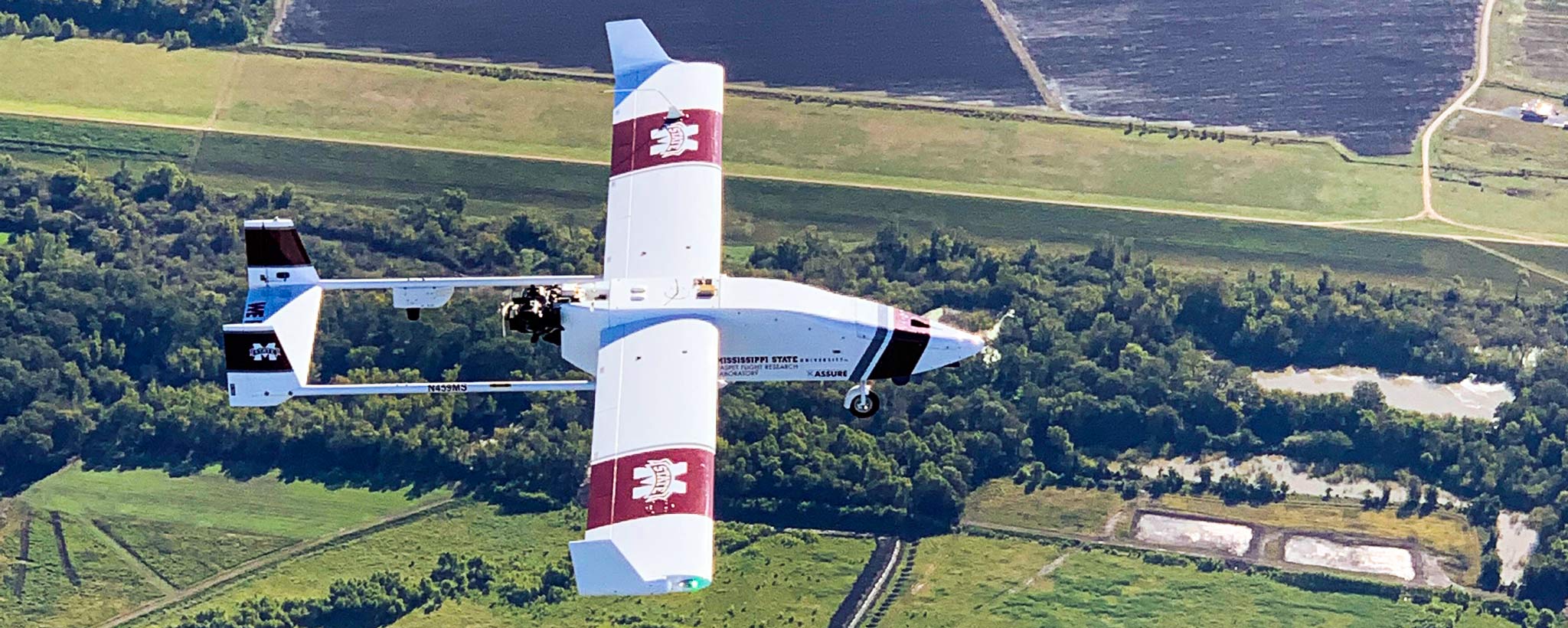Articles

Beyond the Visual Line of Sight: The Next Generation of Drones
Technological advancements are transforming the mobility environment as companies develop, test and deploy autonomous vehicles that do not require a driver. The field of drone technology is no exception as researchers look for ways for unmanned aircraft systems (UAS) to be safely flown beyond the line of sight of a pilot.
TVA and Mississippi State University's Raspet Flight Research Laboratory have agreed to collaborate on expanding the use of UAS to better meet TVA’s operational needs. The Raspet Flight Lab is the nation’s leading academic research center dedicated exclusively to the advancement of UAS. It was designated in 2020 as the Federal Aviation Administration's (FAA) UAS Safety Research Facility, placing the lab at the helm of studying and developing safety and certification standards as UAS become increasingly integrated in the United States national airspace system.
TVA currently uses small UAS weighing less than 55 pounds to gather data at generation sites and transmission assets across the Valley in accordance with the FAA guidelines. However, UAS are not presently permitted by the FAA to operate unless they can be seen visually by the pilot or a trained observer working with the pilot, creating a line-of-sight limitation of about one mile.
Having the ability to fly larger unmanned aircraft beyond visual line of sight is the next big opportunity for reaching the full potential of this technology.
It will enable TVA to:
- supplement existing linear transmission inspections traditionally performed with manned aircraft;
- demonstrate efficiencies and cost savings with data collection;
- inspect remote areas where land features make ground access challenging; and
- gain a new level of awareness in certain situations, all while keeping people on the ground.
Central to the new joint effort is the utilization of a larger UAS that that would weigh several hundred pounds and operate under rules similar to small general aviation aircraft. It will have several hours of endurance, be capable of carrying multiple sensor payloads, and be able to fly at night. The UAS would be operated from a mobile command station that would house flight crew and support equipment.
"TVA is building the energy system of the future and we need to use the latest technology to do that,” says Walter Hodges, Manager of TVA UAS Operations & Training. “The ability to inspect our resources regularly in all situations is key to sustaining our 99.999 percent service reliability. Finding ways to safely increase inspection efficiency helps reduce operation costs, keeping our rates as some of the lowest in the nation.”
“Future FAA-approved implementation of detect and avoid systems will allow UAS to operate safely beyond visual line of site," says Tom Brooks, Director of the Raspet Flight Lab. “We’re eager to work alongside TVA in evaluating UAS technologies.”